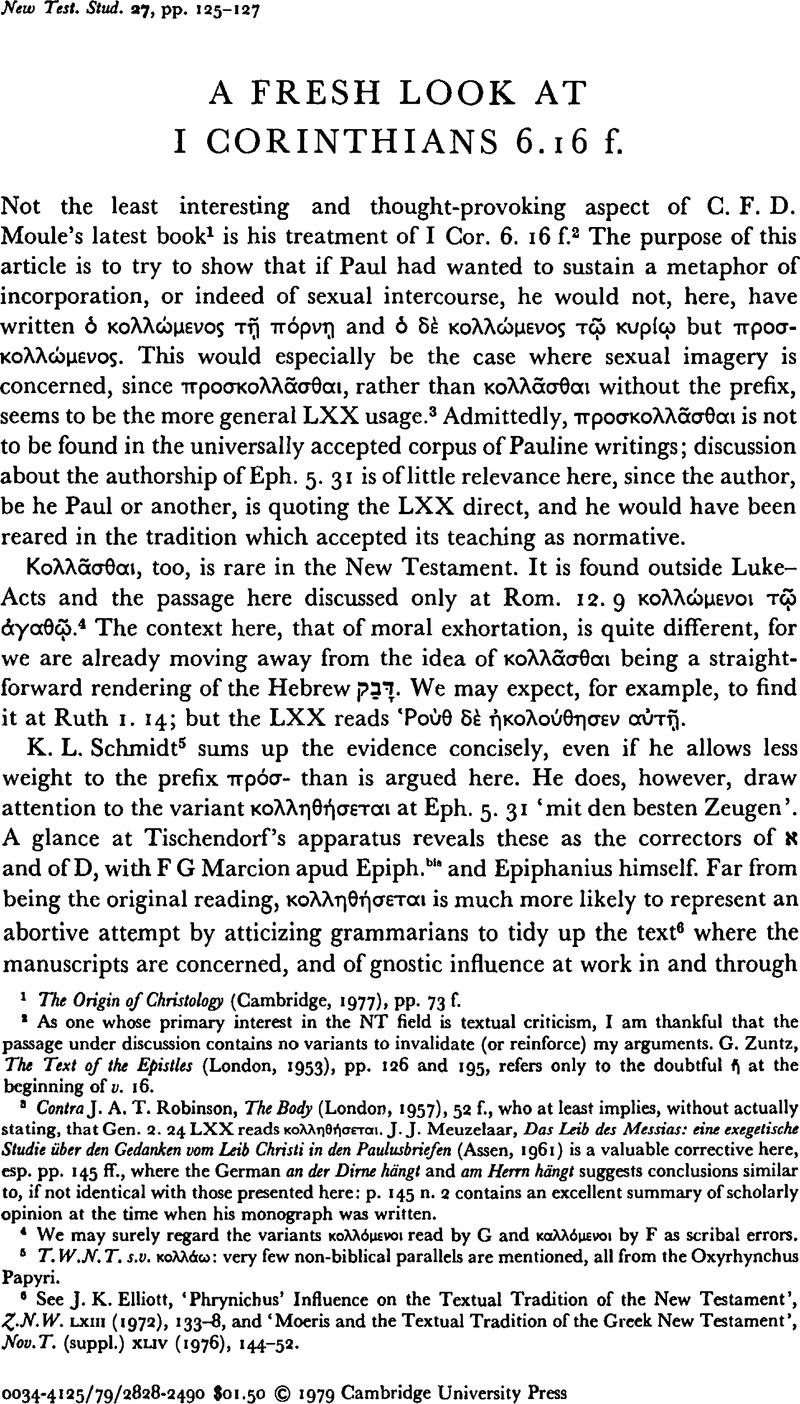Article contents
A Fresh Look at I Corinthians 6. 16 f.
Published online by Cambridge University Press: 05 February 2009
Abstract

- Type
- Short Studies
- Information
- Copyright
- Copyright © Cambridge University Press 1980
References
1 The Origin of Christology (Cambridge, 1977), pp. 73 f.Google Scholar
2 As one whose primary interest in the NT field is textual criticism, I am thankful that the Passage under discussion contains no variants to invalidate (or reinforce) my arguments. Zuntz, G., The Text of the Epistles (London, 1953), pp. 126 and 195Google Scholar, refers only to the doubtful ñ at the beginning of v. 16.
3 Contra Robinson, J. A. T., The Body (London, 1957), 52 f.Google ScholarPubMed, who at least implies, without actually stating, that Gen. 2. 24 LXX reads κολληθήσεтαι. Meuzelaar, J. J., Das Leib des Messias: eine exegetische Studie über den Gedanken vom Leib Christi in den Paulusbriefen (Assen, 1961)Google Scholar is a valuable corrective here, esp. pp. 145 ff., where the German an der Dirne hängt and am Herrn hängt suggests conclusions similar to, if not identical with those presented here: p. 145 n. 2 contains an excellent summary of scholarly opinion at the time when his monograph was written.
4 We may surely regard the variants κολλόμενοι read by G and καλλόμενοι by F as scribal errors.
5 T. W.N.T. s.v. κολλάω: very few non-biblical parallels are mentioned, all from the Oxyrhynchus Papyri.
6 See Elliott, J. K., ‘Phrynichus' Influence on the Textual Tradition of the New Testament,’ Z.N.W. 63 (1972), 133–8Google Scholar, and ‘Moeris and the Textual Tradition of the Greek New Testament,’ Nov. T. (suppl.) 44 (1976), 144–52.Google Scholar
7 T.W.N.T. ad loc.
8 So, for instance, Thrall, M. E., ‘Christ crucified or second Adam?’ in Lindars, B. and Smalley, S. S. (eds), Christ and Spirit in the New Testament (Cambridge, 1973), p. 147Google Scholar, whose conclusions are impeccable if inadequate.
9 Moule, op. cit. p. 74.
10 This interpretation is designed to be complementary rather than antithetical to that of Dunn, J. D. G., Jesus and the Spirit (London, 1975), pp. 323 and 446Google Scholar n. 106; the stern warning given in this last reference is most valuable.
11 English translation of 2nd edition (London, 1962), p. 46Google Scholar. Note the difference in versenumbering (Héring's 6. 18a we would normally read as 6. 17b).
- 1
- Cited by




